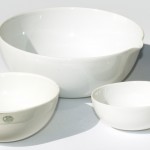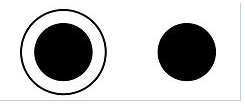Food, Food, Food! It’s the Holidays!
What would the holidays be without food, especially forbidden foods? Are you afraid of eating too much? Here are a few strategies that may help you eat less during the holidays. And they are based in psychology.
Food psychology, that is. There is a program at Cornell University that tries to understand cues and triggers to eating.
Your Dishes
Size
In a series of experiments, Cornell researchers found that people will serve themselves more food when they use large plates. If you are given a small plate, you are more likely to serve yourself less food.
 Another way that the size of the plates can influence the amount you eat is the size of the serving bowl. Many families place serving bowls on the table and family members serve themselves. In a study of serving bowls, the larger the serving bowl, the more food people served themselves.
Another way that the size of the plates can influence the amount you eat is the size of the serving bowl. Many families place serving bowls on the table and family members serve themselves. In a study of serving bowls, the larger the serving bowl, the more food people served themselves.
Color
The color of your plate and the color of your food make a difference in the amount of food you serve yourself. In another study, the food was pasta mixed with red sauce. Participants who had red plates served themselves more pasta with red sauce. Likewise, people who were serving themselves pasta covered with white sauce onto white plates over served themselves. When they had a different colored plate than their pasta sauce, participants served themselves less.
Researchers believe this happens because of an optical illusion called the Delboeuf Illusion bias. In this illusion, two circles that are the same size are placed near each other. One of the circles is surrounded by another larger circle. Depending on the size of the surrounding circle, you see the two same-size solids as either smaller or larger than they are.

Is This A Snack Or A Meal?
A final influence on eating has to do with situational cues. In yet another study, researchers set out food that could be considered either snack food or meal food—foods like quesadillas. Some of the participants had the quesadilla at a dinner table with silverware: this was the “meal” condition. Other participants did not have a place to sit and ate their quesadilla with disposable forks: the “snack” condition. It didn’t matter how hungry they were, those participants in the meal condition ate significantly more than those in the snack condition.
So consider food color, plate and serving plate/bowl sizes when eating this holiday season. Try serving only snacks as well!
Or you could just enjoy your holiday eating and remember these tips after New Years!
Either way we wish you
Happy Holidays!





